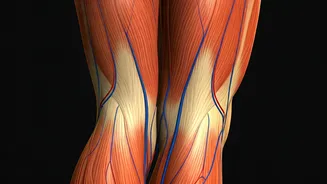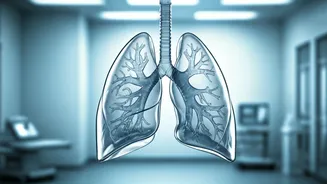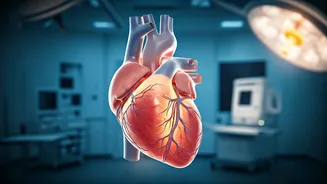The 'Second Heart'
The calf muscle, situated at the back of the lower leg, is often hailed as the 'second heart' due to its essential function in circulatory health. This
muscle group works like a pump, assisting the heart in circulating blood throughout the body. When you walk, run, or even stand, the calf muscles contract and relax, squeezing the veins in the lower legs. This action helps push blood back up towards the heart, preventing blood from pooling in the legs and feet. This return of blood is especially crucial because it allows deoxygenated blood to return to the heart to be re-oxygenated and then recirculated throughout the body. Impaired calf muscle function can lead to poor circulation, causing various problems such as swelling, varicose veins, and an increased risk of blood clots. Therefore, keeping your calf muscles strong and active is crucial for maintaining good cardiovascular health and supporting overall well-being.
Strengthening Exercises
There are several effective exercises to strengthen the calf muscles. One of the most basic and accessible exercises is the calf raise. To perform a calf raise, stand with your feet flat on the ground and then slowly rise up onto your toes, engaging your calf muscles. Hold this position for a few seconds before slowly lowering back down. Calf raises can be done anywhere, anytime, and require no equipment, making them ideal for incorporation into your daily routine. Another valuable exercise is heel drops. Stand on the edge of a step, with your heels hanging slightly off the edge, and slowly lower your heels below the step, feeling the stretch in your calf muscles. Hold this position for a few seconds and then slowly raise your heels back up to the starting position. This exercise provides a more intense stretch and can enhance flexibility in addition to strength. For added resistance, incorporate weightlifting. You can perform calf raises while holding dumbbells or using a weight machine. Start with a weight that allows you to perform the exercise with good form, gradually increasing the weight as your strength improves. When working your calf muscles, aim for 2–3 sets of 15–20 repetitions of each exercise, several times a week, to achieve the best results.
Staying Active
Regular physical activity is another critical aspect of maintaining strong calf muscles and promoting good circulation. Engaging in activities that involve movement of the lower legs can help keep the calf muscles active and healthy. Walking is an excellent choice. A brisk walk for at least 30 minutes each day can significantly improve circulation and strengthen your calf muscles. Running or jogging are great options for those who want a more intense workout. These high-impact activities stimulate the calf muscles more vigorously, providing a more robust workout. Cycling also provides a good workout for the calf muscles. When you pedal, your calf muscles contract and relax, helping to pump blood back to the heart. Swimming is another low-impact exercise that is beneficial. The water's resistance forces your muscles to work harder, and the gentle movement of the legs helps to stimulate circulation without putting excessive strain on your joints. Try to incorporate a mix of these activities into your weekly routine to keep your calf muscles strong and your circulation flowing smoothly.
Maintaining Posture
Good posture also plays an important role in supporting healthy calf function and enhancing circulation. Prolonged periods of sitting or standing can put extra pressure on the calf muscles and impair blood flow, so maintaining proper posture can help mitigate these effects. When sitting, make sure you have good support for your back and feet. Your feet should be flat on the floor or supported by a footrest, and your knees should be at a 90-degree angle. This position helps prevent blood from pooling in your lower legs and feet. While standing, distribute your weight evenly on both feet and avoid locking your knees. Locking your knees can restrict blood flow and put extra strain on your calf muscles. Try to stand up and move around frequently, especially if your job involves prolonged sitting or standing. Take regular breaks to stretch your legs and walk around the room. Small, frequent movements throughout the day can significantly improve circulation and reduce the strain on your calf muscles, thereby enhancing overall health.
Hydration and Diet
Proper hydration and a balanced diet also support healthy calf function and aid in maintaining good circulation. Staying well-hydrated is crucial for optimal blood volume and circulation. Drinking plenty of water helps to keep your blood flowing smoothly and prevents it from becoming too thick, which can hinder circulation. Aim to drink at least eight glasses of water per day, or more if you are physically active or live in a hot climate. A diet rich in nutrients can also support healthy calf muscles. Include foods rich in vitamins and minerals that support muscle function and blood vessel health. Potassium is particularly important for muscle function and can be found in bananas, sweet potatoes, and spinach. Magnesium aids in muscle relaxation and blood vessel dilation, and foods such as nuts, seeds, and leafy greens are excellent sources. Reduce your intake of processed foods, excessive salt, and unhealthy fats, as these can contribute to poor circulation. Instead, focus on a diet rich in whole foods, fruits, vegetables, and lean proteins to support overall health and keep your calf muscles functioning optimally.











